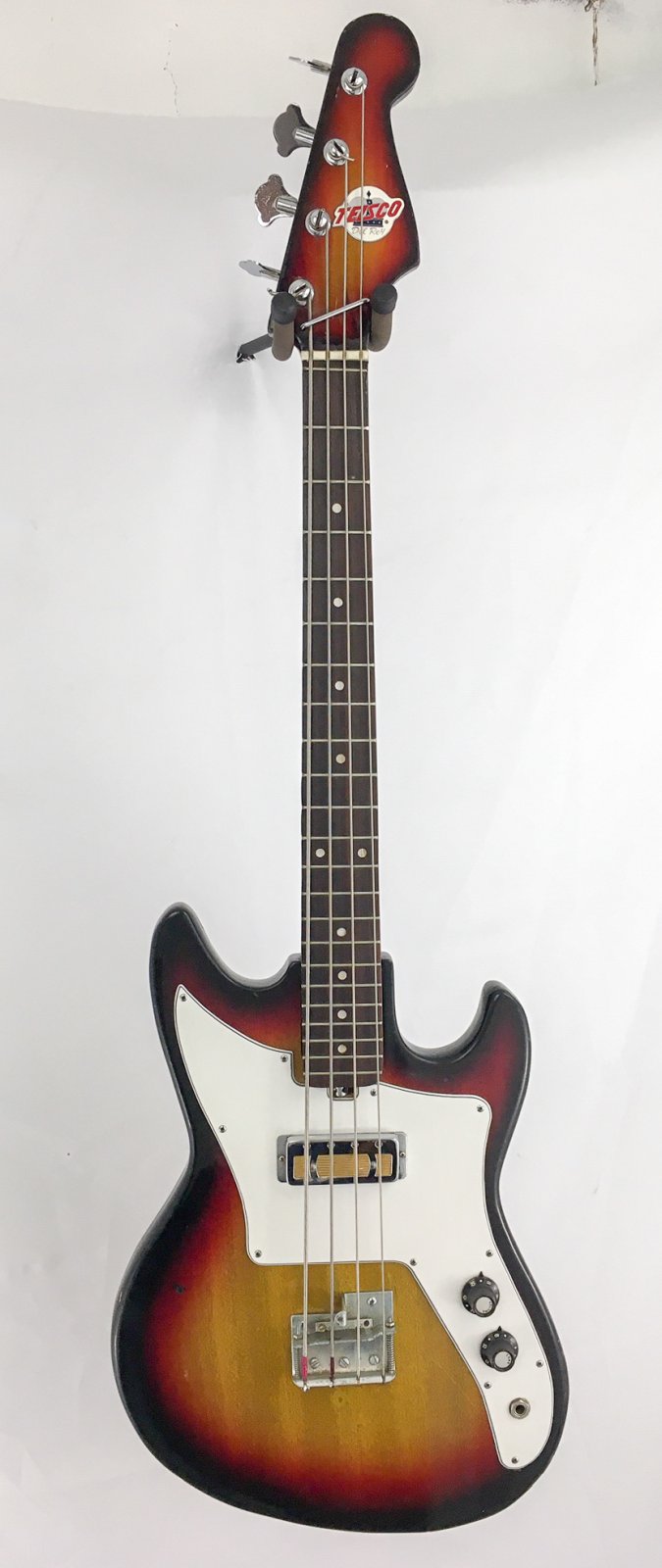


(RIGHT) An EB-220 with brushed-metal pickguard.Ī four-page Teisco Del Rey brochure from early 1965 described the two rocker switches as “individual noiseless velvet touch on/off switches” that controlled “Two ultra high sensitive pickups.” The text further notes that, “Brushed satin metal plates protect the body finish,” a reference to not only the pickguard, but a plate on the headstock (which, on some instruments, was white plastic).īy the following year, many Teisco Del Rey solidbody guitars and basses (and associated brands) were given striped brushed-metal pickguards their matte finish applied to reflect light in two directions. Under the top edge of the plate was a piece of grayish-green foam that muted the strings. The bridge/tailpiece was under a plate that attached with a single screw. The 21-fret rosewood fretboard was shown with rectangular position markers along the bass side and double blocks (one along the treble side) at the 12th fret. The headstock has an oversized silhouette that exudes an Egyptian-pharaoh vibe, and the crown on the logo plate alludes to the “Del Rey” (Spanish for “of the king”) portion of the name.

One of the more-seen Teisco Del Rey basses thumped in garages across the country was the solidbody EB-200, a simple, short-scale instrument with practical (and interesting) aesthetic features. market, changed the brand name to Teisco Del Rey. Which means, of course, that an untold number of American teenagers played instruments like these.ĭuring that era, Teisco instruments were imported from Japan by Westheimer Sales, a distributor that, for the U.S. Teisco Del Rey basses from the 1960s are exemplary of the Japanese-made instruments that swept into the American market like a tsunami during the “guitar boom” – and were the primary contributor to the demise of America’s budget-guitar industry. However, it was also a way to add the de rigeur Spanish cachet necessary for “Spanish” guitars of the time.Two of the finishes offered on the EP-200B, circa 1966. This was no doubt added to the Teisco name, in part, to suggest quality. Occasionally, you may see plain Teisco logos from this period with the crown in the background, but no Del Rey.ĭel Rey, of course, is Spanish for “of the king,” which explains the crown. This had an italicized Teisco superimposed over a crown with a script Del Rey underneath, backed by a round circle. In about 1964, Jack Westheimer began bringing in Teisco guitars bearing the Teisco Del Rey logo.

At some point in ’64 the Japanese Teisco logo changed from the circle Swan-S to a stylized, modern sans-serif type set in an italicized T shape. In 1964, the company name changed again, this time to Teisco Co., Ltd.


 0 kommentar(er)
0 kommentar(er)
